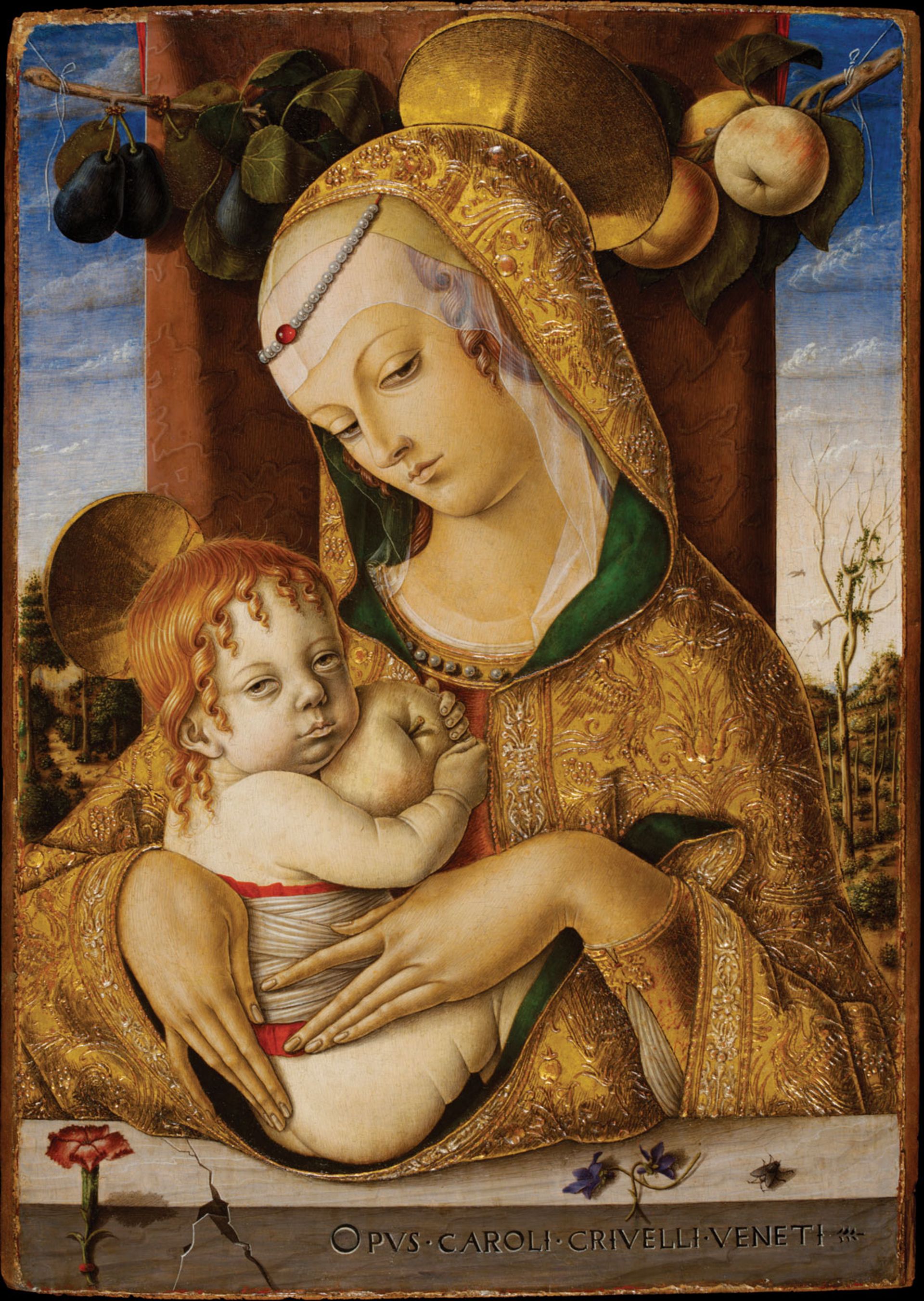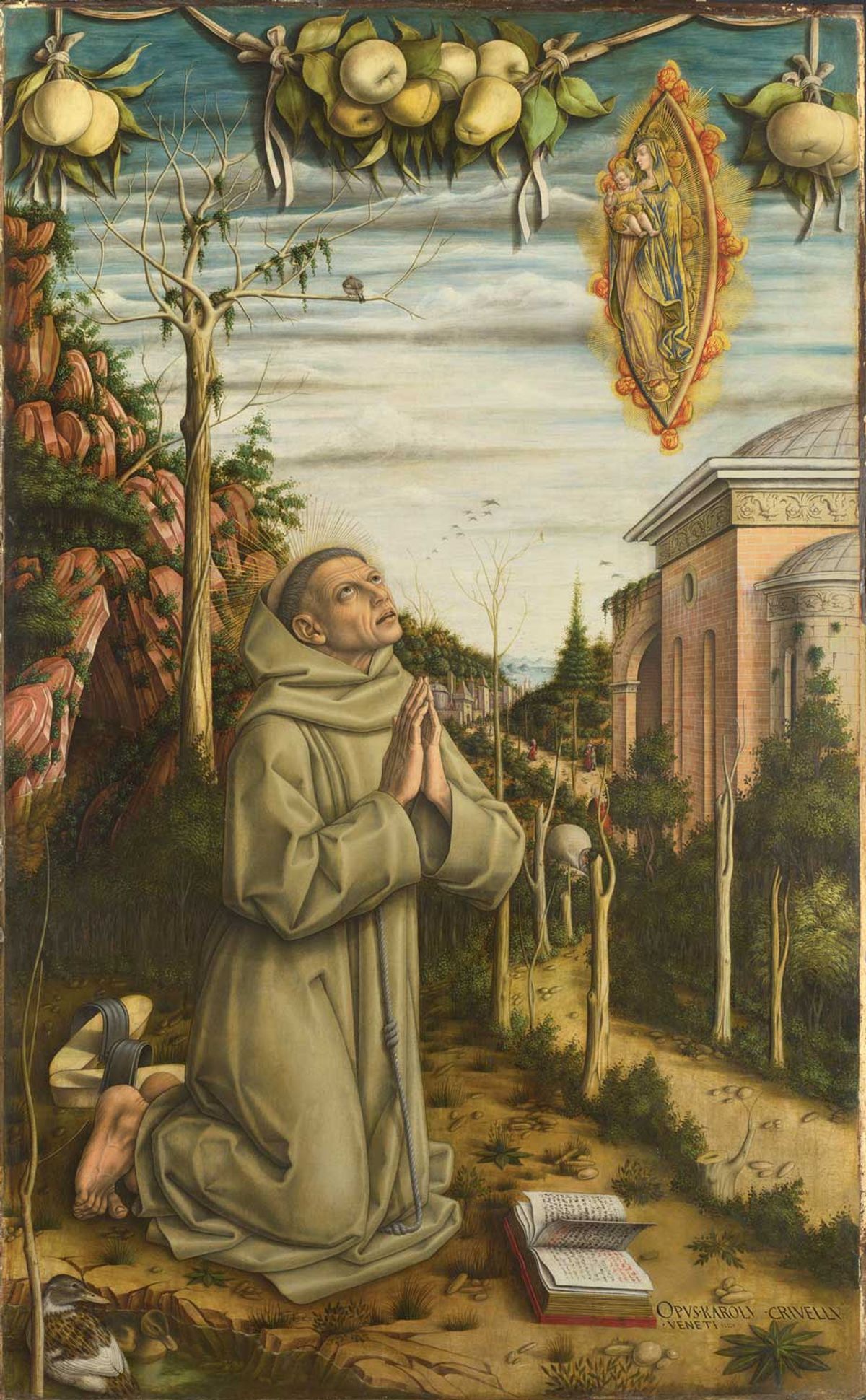Why would a contemporary art venue like Birmingham’s Ikon Gallery stage an exhibition devoted to the largely overlooked and enigmatic Northern Italian Renaissance painter Carlo Crivelli? “There is so much that’s radical about him and that connects with the contemporary,” explains the gallery’s director Jonathan Watkins, for whom a Crivelli show has long been a “dream” project. “I really like art historical shows set in a contemporary context like ours. You see the works more directly… I want you to experience Crivelli as this living, breathing, funny, complicated, smart human being.”
There is so much that’s radical about him and that connects with the contemporaryJonathan Watkins, Ikon Gallery director
The show, which is co-curated by Watkins and Amanda Hilliam, will remind visitors that every historical figure was contemporary in their day. And Crivelli’s artistic vocabulary—made up of sophisticated architectural perspectives; emphatic illusionistic motifs of fruit, nuts, vegetables and insects; deliberately wayward use of Netherlandish naturalism; exquisite surfaces; and charged religious symbolism—puts him on a par with some of the most inventive artists of any era. “Arguably Crivelli was as radical as Magritte,” Watkins says.
Crivelli (around 1430-95) belongs to the time of Leonardo da Vinci and Giovanni Bellini, but he always went against the mainstream. Born in Venice, he was convicted in 1457 of adultery (with the wife of a sailor). After six months in prison, he left Venice for Padua, where he was traditionally trained and conceived a great admiration for Mantegna, then moved to Zara in Dalmatia, and eventually settled in the central Italian Marches region, where he produced many of his most important works.

Carlo Crivelli's Virgin and Child (around 1480) Victoria and Albert Museum, London
“There is a distinctly local accent to his painting,” Watkins says. The characteristic rocky, cracked landscape of his picture settings remind one, Watkins explains, that “this is earthquake country”. And Crivelli was exceptionally open to local craft practice too, working precious metals, jewellery, embroidered fabrics, mottled marbles and relief elements into his pictures, which are characterised by a refined elegance and forceful linearity.
The exhibition will include The Annunciation with Saint Emidius (1486), one of four major loans from the National Gallery in London and a masterpiece that displays the full range of Crivelli’s illusionistic, narrative, and perspectival skills. Crivelli plays with the viewer in a way that “points towards a postmodern art historical future”, Watkins says, pulling us in and then pushing us outside of the picture space, “creating a kind of illusion of illusion”. And all the details he delights in are extraordinarily telling. The title of the show, Shadows on the Sky, takes its inspiration from an illusionistic swag of fruit, seemingly strung across the top of The Vision of the Blessed Gabriele (around 1489), which casts shadows on the naturalistic painted sky behind. And so, this trompe l’oeil is used to simultaneously trick the eye and reveal its trick.

Crivelli's The Annunciation, with Saint Emidius (1486) National Gallery
Against the hugely challenging backdrop of the Covid-19 pandemic, the gallery has secured at least ten loans for what Watkins says will be a “small but beautifully formed” exhibition. In addition to the National Gallery paintings, these include the Vatican’s Madonna and Child (1482), Berlin Gemäldegalerie’s St Benedict (around 1488), and the Wallace Collection’s St Roch (around 1480), who, as patron saint of plague sufferers, will be given a symbolic wall to himself.
The show was made possible thanks to £125,000 from the inaugural Ampersand Foundation Award.
• Carlo Crivelli: Shadows on the Sky, Ikon Gallery, Birmingham, 23 February-29 May


